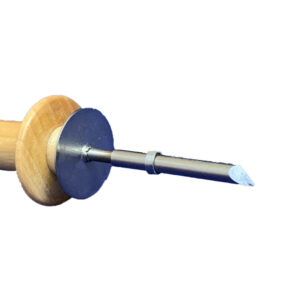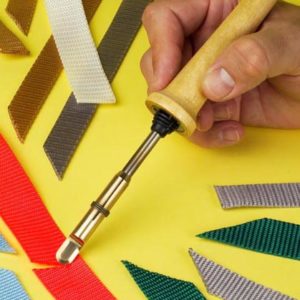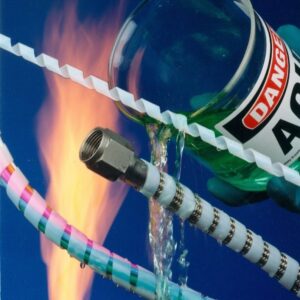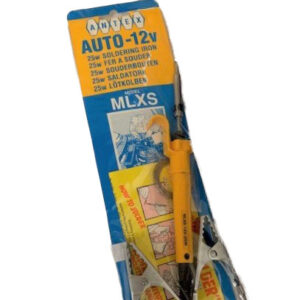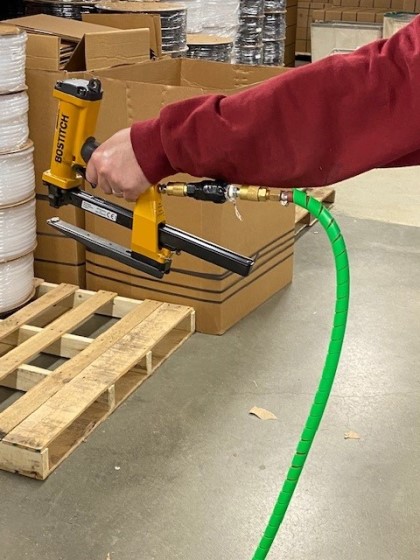
Powered by compressed air, pneumatic tools are useful and portable, ideal for industrial workshops, construction sites and other workplaces that use power tools. These tools include nail guns, paint sprayers, sanders, drills, staple guns, grinders, jackhammers and more. Pneumatic tubing or hose conveys this pressurized air to the tools, allowing them a certain amount of mobility.
Sometimes this tubing is reinforced internally with textile fibers for better strength, though typically consists of an inner tube with layers of reinforced braiding or spiral wrapping as an outer protective cover. Without such protective material to protect it, it can fail prematurely. This happens due to external mechanics, such as excessive vibrating, flexing, twisting or kinking as well as abrasion, snagging or bending beyond a certain radius.
When installing tubing, avoid doing so under tension, or with tight bend radiuses, as this can cause leakage or damage fittings. Tubing should also be protected from debris from welding or other processes that present fire hazards. For these reasons, prioritizing protection of pneumatic tubing can significantly extend the life of equipment.
Material for & Types of Pneumatic Tubing
Polyurethane
As the most commonly used material for pneumatic tubing, polyurethane is flexible, resists kinking and works at pressures of 150 psi (pounds per square inch) or higher. Additives can additionally make it stable when exposed to ultraviolet rays from the sun to allow for outdoor use. Durable, resistant to abrasions and with excellent material memory, it works well for many applications. Its resistance to harsh chemicals also makes it invaluable for applications that expose it to fuels, petroleum or oil-based chemicals.
It works well as tubing for:
- Air tools
- Control lines
- Lubricated air feeds
- Robotics and other automated machinery
- Vacuum equipment
PVC
As an inexpensive material, PVC resists kinking and crushing as well as working at pressures up to 200 psi. Its use as pneumatic tubing is limited, however, as pressurized gases can cause it to explode catastrophically. Because of this, it’s against OSHA (Occupational Safety and Health Administration) standards to use PVC for pneumatic piping above ground. OSHA does, however, allow it for use when transporting compressed gases underground.
Nylon
Noted for being lightweight yet rugged, nylon is standard for pneumatic tubing applications requiring chemical and heat resistance, withstanding temperatures up to 200˚ F (93˚ C). Withstanding pressures up to 800 psi, nylon also resists abrasions, impacts and corrosion, even in below freezing temperatures. It also has superior elastic memory, withstanding repeated flexing without fracturing and offering dimensional stability due to low water absorption.
Nylon tubing works well in:
- Air conditioning and other air distribution systems
- Refrigeration and cooling systems
- Any pneumatic system requiring retractable coils
PTFE
Used in high-heat, high-pressure and other harsh environments, pneumatic tubing made from PTFE resists mechanical degradation, handling temperatures up to 500˚ F (260˚ C) and pressure to 372 psi. It’s also chemically inert, chemical-resistant and has useful dielectric properties, making it appropriate for any applications where static electricity is an issue.
Polyethylene (PE)
Widely used for pneumatic tubing, polyethylene tubing is semi-rigid, allowing it to connect to fittings without clamps. Inexpensive and lightweight, PE can flex repeatedly without wearing as well as being resistant to cracking. Due to its inert nature, it’s used in a wide variety of industries.
Its pneumatic control applications include for:
- Air tools
- Analytical instrumentation
- HVAC systems
- Pneumatic logic and actuation systems
- Pressure measurement apparatus
- Robotics
- Semiconductor equipment
- Vacuum equipment
Polypropylene
The most lightweight of thermoplastics, polypropylene offers exceptional dimensional stability, provides good surface hardness, withstands UV radiation, welds easily, resists chemicals and is easily colored.
Suggested pneumatic uses include:
- Electronic equipment
- Fluid dispensing equipment
- Manufacturing various instruments and semiconductors
Other Materials
Though these materials aren’t primarily used for pneumatics, the following materials can be used for specific pneumatic applications:
- Fluoropolymers operate in environments between -200° F and 500° F and are resistant to corrosive chemicals.
- Latex is flexible and resilient, easily retaining material memory from repeated bending and easy to sterilize.
- Silicone tubing is pliable and elastic, heat-resistant and not easily alterable due to weather; because of its properties, it is often used within the medical industry.
Protecting Pneumatic Tubing
Protective coverings are used around pneumatic tubing to prevent wear and tear, damage from abrasion or from other environmental factors. They are used to keep equipment in good working order.
Such coverings can:
- Increase service life.
- Provide protection from damage.
- Help resist UV sunlight.
- Provide fire resistance.
There are a number of different types of coverings that can be used for protection, generally categorized as wraps, guards or sleeves. Many of these can also be used for hydraulic tubing or hoses as well.
Spiral Wrap
One of the best ways to protect pneumatic tubing involves spiral wrap. Flexible and with heavy-duty options available for use in harsher environments, spiral wrap can protect most types of industrial pneumatic tube assemblies. Though spiral wraps can be made from different materials, they are typically made from polyethylene or other heavy-duty polymers, with round edges and a flat profile that prevents damage from abrasion, crushing loads, cuts and impact.
These flat, spiral-shaped protective guards wrap around the tubing and can be attached without removing the whole assembly. They are also lightweight and economical, relatively easy to install and can even bundle pneumatic tubing from different machines or tools together. They additionally act as chafe guards for pneumatic hand tools, shielding pneumatic tubes from sharp metal edges.
Spiral wrap is used extensively in the following industries and systems:
- Aeronautical
- Automated manufacturing
- Automotive
- Computer networking systems
- Construction
- Electro-mechanical assemblies
- Electronics and control systems
- Robotics
- Utilities
Spring Guards
Made from plastic or metal, spring guards protect pneumatic tubing from flexing, kinking or twisting. These are essentially wound steel or plastic springs, coming in various diameters to slide over tubing or hoses. They’re available in standard lengths or bulk coils that are then cut to fit.
Typically plated with zinc to resist corrosion, metal spring guards allow tight-bend radiuses and must be fitted before the pneumatic hose installation on the pneumatic device. Plastic spring guards work on exposed tubing, and are often fitted after assembly, sometimes even after they’re already been attached to the equipment. Steel spring guards are commonly used for construction equipment, though suit any application where pneumatic tubing requires protection from abrasion, cutting, gouging, impact or compression.
Textile Sleeves
Typically used for pneumatic tubing or hoses inside equipment, these protective covers slip onto tubing or hoses and are sometimes also referred to as fabric sleeves. They are usually made from dense polyester, nylon or polypropylene fabric that protects the tubing or hose assembly. They protect from abrasion that may cause damage. Fire sleeves offer additional protection and are made from woven fiberglass, silicone or other fire-resistant fabric. Point-of-contact sleeves cover and protect only specific areas where tubing is most vulnerable. Contact M.M. Newman Corporation today to learn more about spiral wraps and other methods for protecting pneumatic tubing and hoses.


